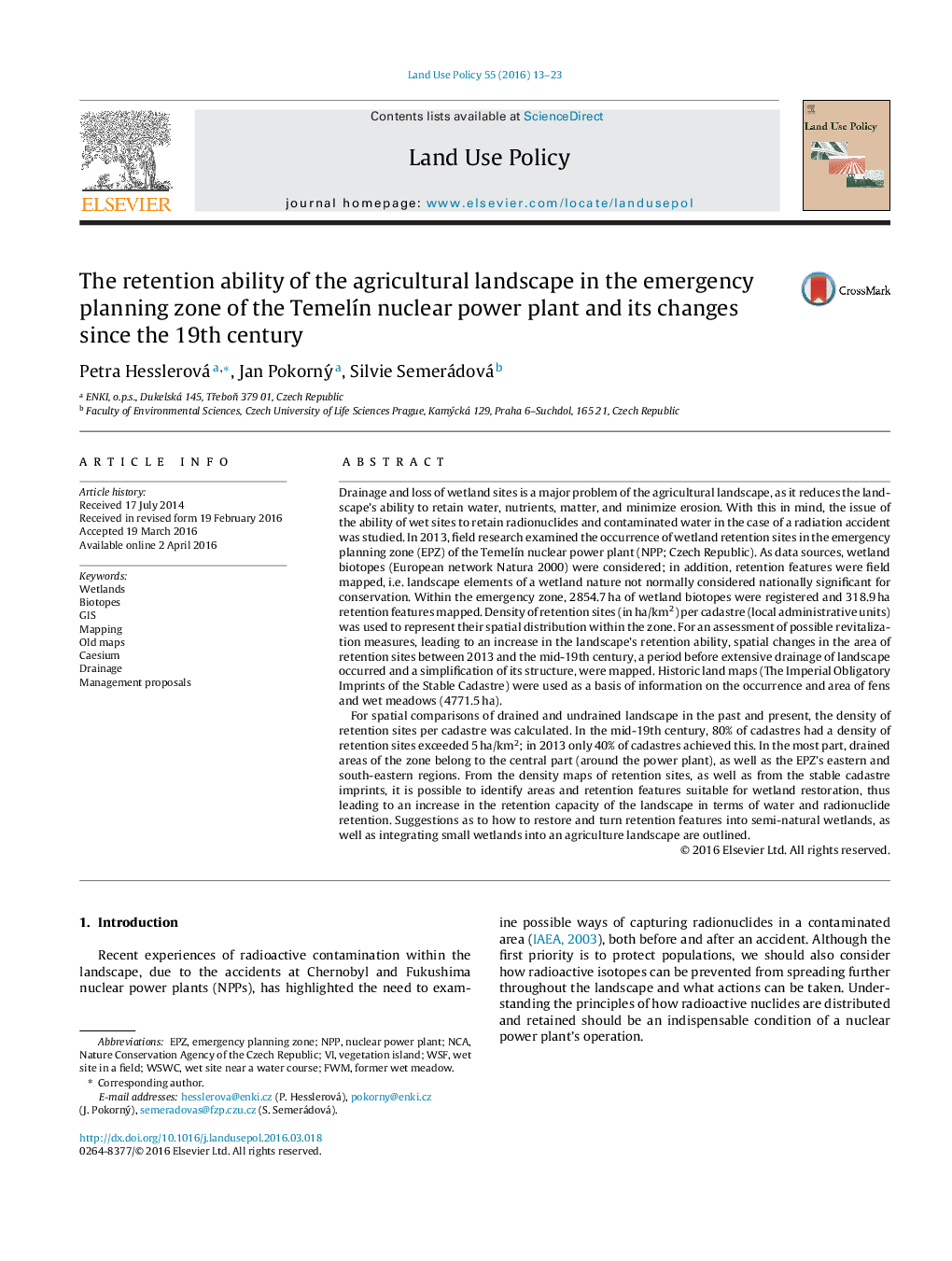| Article ID | Journal | Published Year | Pages | File Type |
|---|---|---|---|---|
| 6547221 | Land Use Policy | 2016 | 11 Pages |
Abstract
For spatial comparisons of drained and undrained landscape in the past and present, the density of retention sites per cadastre was calculated. In the mid-19th century, 80% of cadastres had a density of retention sites exceeded 5Â ha/km2; in 2013 only 40% of cadastres achieved this. In the most part, drained areas of the zone belong to the central part (around the power plant), as well as the EPZ's eastern and south-eastern regions. From the density maps of retention sites, as well as from the stable cadastre imprints, it is possible to identify areas and retention features suitable for wetland restoration, thus leading to an increase in the retention capacity of the landscape in terms of water and radionuclide retention. Suggestions as to how to restore and turn retention features into semi-natural wetlands, as well as integrating small wetlands into an agriculture landscape are outlined.
Keywords
Related Topics
Life Sciences
Agricultural and Biological Sciences
Forestry
Authors
Petra Hesslerová, Jan Pokorný, Silvie Semerádová,
